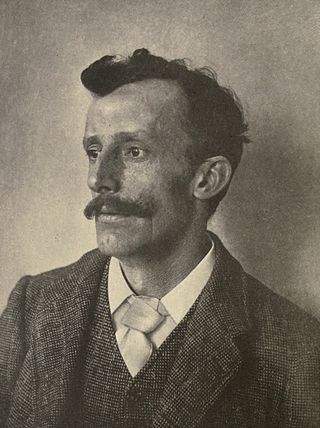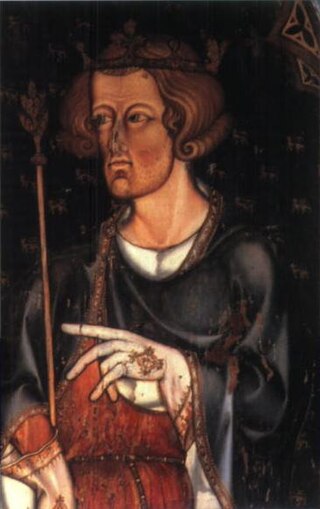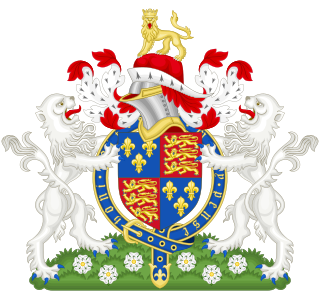
Frederic William Maitland was an English historian and jurist who is regarded as the modern father of English legal history. From 1884 until his death in 1906, he was reader in English law, then Downing Professor of the Laws of England at the University of Cambridge.

Sir Paul Gavrilovitch Vinogradoff was a Russian and British historian and medievalist.

The Statutes of Mortmain were two enactments, in 1279 and 1290, passed in the reign of Edward I of England, aimed at preserving the kingdom's revenues by preventing land from passing into the possession of the Church. Possession of property by a corporation, such as the Church, was known as mortmain, which literally meant "dead hand". In medieval England, feudal estates generated taxes for the King, principally on the grant or inheritance of the estate. If an estate became owned by a religious corporation which could never die, could never attain majority, and could never be attainted for treason, these taxes never became payable. It was akin to the estates being owned by the dead, hence the term.
The Charter of Liberties, also called the Coronation Charter, or Statutes of the Realm, was a written proclamation by Henry I of England, issued upon his accession to the throne in 1100. It sought to bind the King to certain laws regarding the treatment of nobles, church officials, and individuals. The nineteenth-century historians Frederick Maitland and Frederick Pollock considered it a landmark document in English legal history and a forerunner of Magna Carta.

Sir Thomas de Littleton or de LyttletonKBSL(c. 1407–23 August 1481) was an English judge, undersheriff, Lord of Tixall Manor, and legal writer from the Lyttelton family. He was also made a Knight of the Bath by King Edward IV.

Sir Frederick Pollock, 3rd Baronet PC, FBA was an English jurist best known for his History of English Law before the Time of Edward I, written with F.W. Maitland, and his lifelong correspondence with US Supreme Court Justice Oliver Wendell Holmes. He was a member of the Cambridge Apostles.

Gavelkind was a system of land tenure chiefly associated with the Celtic law in Ireland and Wales and with the legal traditions of the English county of Kent.

James Hamilton, 1st Duke of Châtellerault, 2nd Earl of Arran, was a Scottish nobleman and head of the House of Hamilton. A great-grandson of King James II of Scotland, he was heir presumptive to the Scottish throne. Arran was Regent of Scotland during the minority of Mary, Queen of Scots from 1543 to 1554, when he lost the regency to Mary of Guise. At first pro-English and Protestant, he converted to Catholicism in 1543 and supported a pro-French policy. He reluctantly agreed to Mary's marriage to Francis, eldest son of King Henry II of France, and was rewarded by Henry by being made Duke of Châtellerault in 1549. During the Scottish Reformation, Châtellerault joined the Protestant Lords of the Congregation to oppose the regency of Mary of Guise, and lost his French dukedom as a result.

De donis conditionalibus or the Estates Tail Act 1285 is a chapter of the English Statutes of Westminster (1285). It originated the law of entail – forbidding a landholder to sell his land except to his heirs.

Quia Emptores is a statute passed by the Parliament of England in 1290 during the reign of Edward I that prevented tenants from alienating their lands to others by subinfeudation, instead requiring all tenants who wished to alienate their land to do so by substitution. The statute, along with its companion statute Quo Warranto also passed in 1290, was intended to remedy land ownership disputes and consequent financial difficulties that had resulted from the decline of the traditional feudal system in England during the High Middle Ages. The name Quia Emptores derives from the first two words of the statute in its original mediaeval Latin, which can be translated as "because the buyers". Its long title is A Statute of our Lord The King, concerning the Selling and Buying of Land. It is also cited as the Statute of Westminster III, one of many English and British statutes with that title.
Generally, a quitclaim is a formal renunciation of a legal claim against some other person, or of a right to land. A person who quitclaims renounces or relinquishes a claim to some legal right, or transfers a legal interest in land. Originally a common-law concept dating back to Medieval England, the expression is in modern times mostly restricted to North American law, where it often refers specifically to a transfer of ownership or some other interest in real property.

Under feudalism in France and England during the Middle Ages, tenure by serjeanty was a form of tenure in return for a specified duty other than standard knight-service.

Knight-service was a form of feudal land tenure under which a knight held a fief or estate of land termed a knight's fee from an overlord conditional on him as a tenant performing military service for his overlord.
Frank almoin, frankalmoign or frankalmoigne was one of the feudal land tenures in feudal England whereby an ecclesiastical body held land free of military service such as knight service or other secular or religious service. Not only was secular service not due but in the 12th and 13th centuries jurisdiction over land so held belonged to the ecclesiastical courts, and was thus immune from royal jurisdiction.

Dower is a provision accorded traditionally by a husband or his family, to a wife for her support should she become widowed. It was settled on the bride by agreement at the time of the wedding, or as provided by law.

Cestui que is a shortened version of "cestui a que use le feoffment fuit fait", lit. 'the person for whose use/benefit the feoffment was made'; in modern terms, it corresponds to a beneficiary. It is a Law French phrase of medieval English invention, which appears in the legal phrases cestui que trust, cestui que use, or cestui que vie. In contemporary English the phrase is also commonly pronounced "setty-kay" or "sesty-kay". According to Roebuck, Cestui que use is pronounced. Cestui que use and cestui que trust are often interchangeable. In some medieval documents it is seen as cestui a que. In formal legal discourse it is often used to refer to the relative novelty of a trust itself, before that English term became acceptable.
In English law, the assize of novel disseisin was an action to recover lands of which the plaintiff had been disseised, or dispossessed. It was one of the so-called "petty (possessory) assizes" established by Henry II in the wake of the Assize of Clarendon of 1166; and like the other two was only abolished in 1833.
In English law, the assize of mort d'ancestor was an action brought where a plaintiff claimed the defendant had entered upon a freehold belonging to the plaintiff following the death of one of his relatives. The questions submitted to the jury were, "was A seised in his demesne as of fee on the day whereon he died?" and "Is the plaintiff his next heir?" This assize enabled the heir to obtain possession, even though some other person might have a better right to the land than the deceased.
The history of English land law can be traced back to Roman times. Throughout the Early Middle Ages, where England came under rule of post-Roman chieftains and Anglo-Saxon monarchs, land was the dominant source of personal wealth. English land law transformed further from the Anglo-Saxon days, particularly during the post-Norman Invasion feudal encastellation and the Industrial Revolution. As the political power of the landed aristocracy diminished and modern legislation increasingly made land a social form of wealth, subject to extensive social regulation such as for housing, national parks and agriculture.

Taltarum's Case is the name given to an English legal case heard in the Court of Common Pleas, with decisions being handed down in 1465 and 1472. The case was long thought to have established the operation of the common recovery, a collusive legal procedure that was, until finally abolished in 1833, an important element of English law of real property. By means of a complex legal fiction, a recovery converted a freehold or copyhold property held in fee tail, which could not be freely sold or disposed of, into an estate in fee simple, which could be disposed without restriction.











